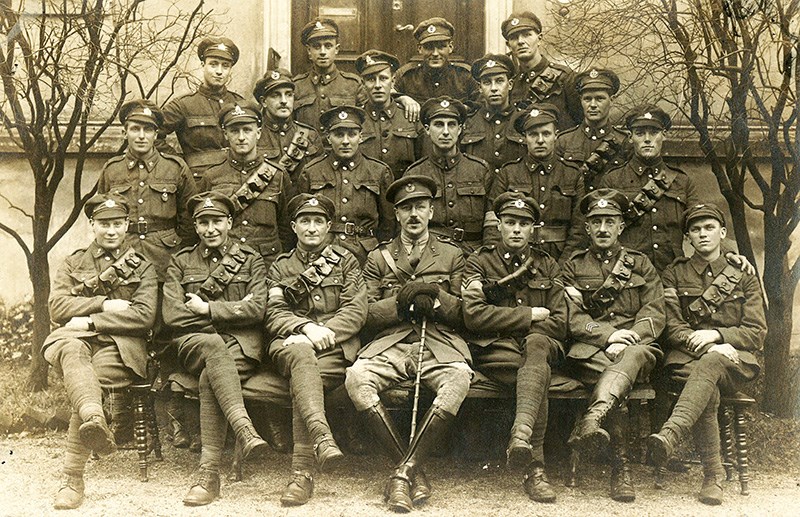George Mathewson
A friend and former co-worker contacted me recently to say he had something I might find of interest.
Sarnia’s Gerry Clements described how his father, O. “Red” Clements, had been an amateur photographer. And when he enlisted to fight in the First World War he took his camera.
A few days later, Gerry walked into the office carrying three binders of original, century-old photos. Small and faded though they are, the images are jaw dropping.
In one binder, Red Clements reveals the blasted cathedrals and wasted countryside following the battle of The Somme, one of the bloodiest in human history when one million men were killed or wounded.
He was also at Vimy Ridge, which historians say was the defining battle at which Canada emerged as a nation from the shadow of Britain.
Deployed with a signals unit in the 13th Battalion of the Canadian Field Artillery, his photos chronicle his travels across England and Scotland, Belgium and France, and, toward the end, in Germany itself.
There are images of cavalry and primitive tanks. Others show bomb craters and gas masks, even a submarine. But he also captured happier times with his buddies getting their hair cut, writing letters home and playing baseball.
But there was even more. In 1918, in northern France, Red Clements came across a collection of negatives in a German trench, and he later printed them.
These photos, taken by an unknown photographer on the other side of the barbed wire, reveal the faces of the German soldiers, posing singling and in groups, in snow and in trenches.
In times of war it is standard practice to demonize the enemy, to make them less human. But these photos of young Germans are impossible to tell apart from the Canadian boys, except for slight differences of uniform.
Which brings us to today.
In each of the first two years The Sarnia Journal has published a special edition for readers. In 2014 it was a series of aerial photos to celebrate the city’s first 100 years, and in 2015 an historical edition called Sarnia: Then and Now.
This year, we plan to honour Sarnia’s military contributions.
Thanks to the remarkable City of Sarnia War Remembrance Project, and working with some of the volunteers who compiled it, we intend to publish a free, special edition in time for Remembrance Day.
The Remembrance Project, led by researcher Tom Slater, has pulled together for the first time the contributions and sacrifices of Sarnians through five wars.
Like the story contained in the pages of Gerry Clements rare photo albums, Sarnians have countless tales to tell in words and pictures.
The Journal’s third special edition in coming in November. We’ll keep you posted.
